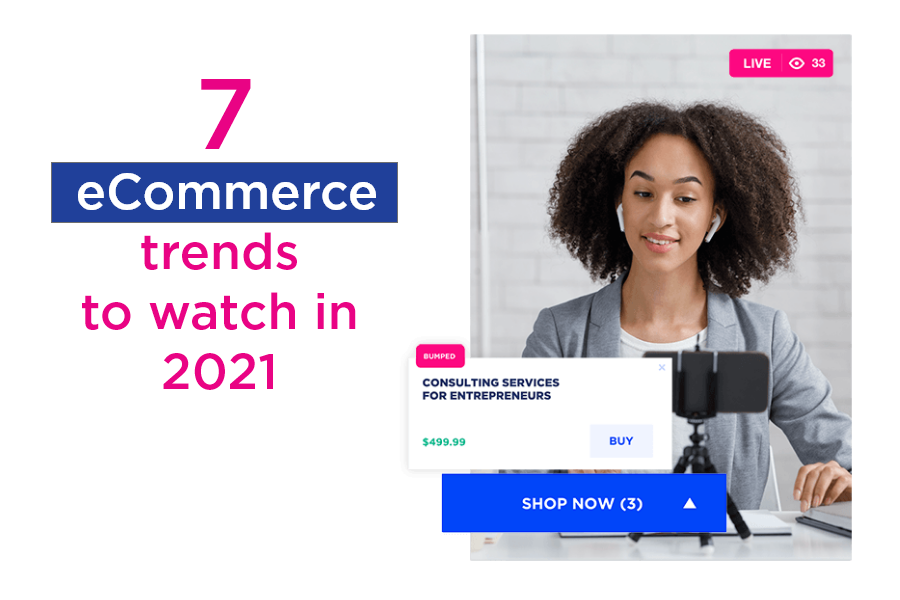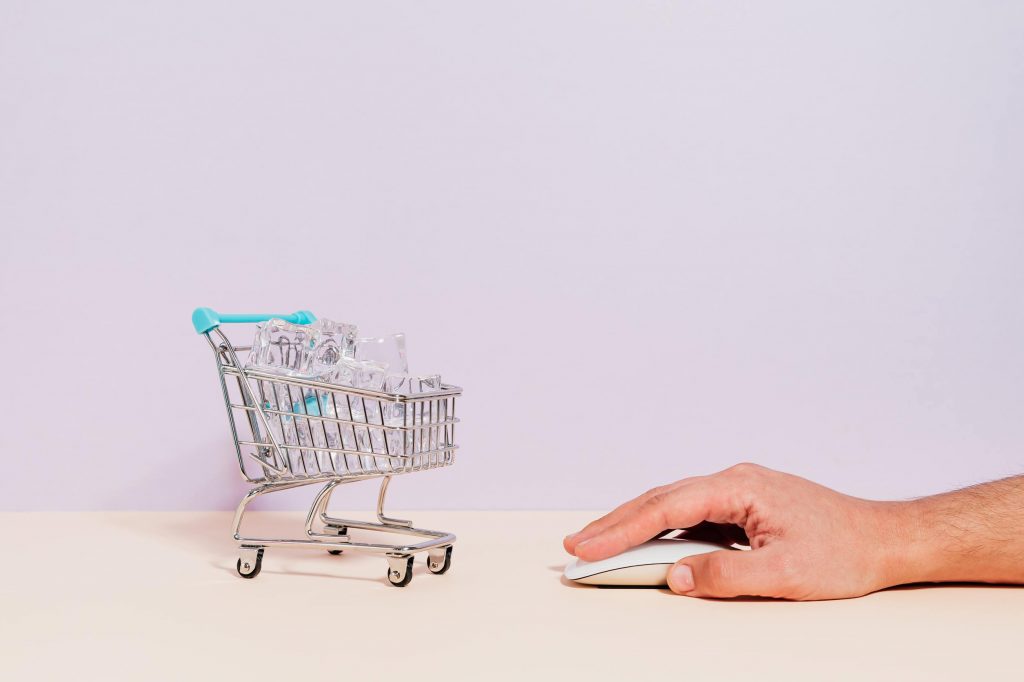
eCommerce is one of the fastest segments in the world. As people are more likely to purchase products online, companies that operate in eCommerce adapted to new trends.
Today, we will present 7 eCommerce trends that shouldn’t be overlooked in 2021. However, as we will see by the end of the article, these 7 trends are often related. Because eCommerce is an experience, and as every experience out there, its pieces are connected.
Almost 90 days into 2021 and the most news I heard was about Bitcoin and cryptocurrencies. What makes things interesting for me is not necessarily the value of the cryptocurrency itself (although I would’ve probably thought differently if I had 20 BTC in my digital wallet), but the fact is that new technologies gained people’s trust. Back in the days, we needed a high authority to vouch for the money. We don’t anymore. We trust technology. And the same principle applies to payment methods as well – you don’t need to have a bank vouchering for your client’s payment. Not in the old way at least.
And this short introduction brings us to eCommerce trend #1
Multiple payment options

Photo by Karolina Grabowska from Pexels
Drop-off is one of the main pain points businesses face since commerce moved online. And although there are several reasons for which people enter your site and decide not to purchase, one should be avoided by all means: poor checkout process. Books have been written about this subject, and definitely, others will follow. But what should be the main takeaway here? Not all people pay the same! Even the same person won’t be able to use the same payment method at all times.
In 2021 you need to offer your clients multiple payment options. It’s not nice to have, it has become a must. The variety of options makes it extremely easy for customers to choose the seller that suits them best – and the payment method is something that they are very aware of. From a logistical point of view, some are better for your business. From the user’s point of view, the more the merrier.
Here are some of the most common payment methods:
Credit card payments
Cash payments (at delivery)
Digital Wallets
Cryptocurrency payments
One-click payment
Omnichannel shopping experience
Experiencing a seamless shopping journey has become the most important aspect for today’s buyers. A recent study showed that 73% of customers use multiple channels while purchasing, making it crucial for brands to be visible both physically and digitally. At its core, the omnichannel approach is a very complex strategy, including marketing in fulfillment as well, not just sales and customer support. Today we are going to look at things just from the clients’ perspective, and why the omnichannel approach will offer them an unforgettable shopping experience. Having both online and physical stores that work interconnected, will allow you to cover the following scenarios. Scenarios that are present daily.
The customer tries one of your products online but wants to be able to decide later – your online presence will allow them to easily buy the product.
The customer sees your products online but wants to test it in-person – having a physical store will allow them to easily respect the pattern.
Or buys a product online but wants to pick it up in-store.
The customer reserves a product online but wants to test it and pay for it in-store.
Or buys your product in-store but wants to have it delivered at home.
The customer buys a product online but wants to return it in-store.
Or buys a product in-store but wants to return it online.
Omnichannel is more complex than that, but see how having both an online and a brick-and-mortar store(s) can help create amazing customer experiences.
Voice command for eCommerce
Voice is the most important component of communication, and we use thousands of words each day. The way we buy online is different not because it’s easier to buy with a simple click, but because the technology was not able to reproduce our natural behavior. However, things have changed. Over the last years, our natural way of buying has become available for eCommerce as well.
By 2023 it’s expected that voice commerce will generate over 80 billion per year in the UK alone.
eCommerce on smartphones. m-commerce
This is not a 2021 trend. This is the new normal and I cannot stress enough the importance of offering a seamless experience for mobile commerce.
Smartphones are the most used gadgets worldwide. More than 3 billion people own a smartphone, and it’s expected that there will be more than 4.3 billion by 2023. Having a responsive platform is crucial, as nowadays half of the internet traffic and one-third of online purchases come from mobile devices.
Another crucial aspect that businesses need to be aware of is that even though the physical in-store traffic declined over the last few years, the average value of each purchase has almost tripled. What leads to this change? The ability to easily conduct shopping research online, using any device – and especially mobile phones. Having a digital presence, adapted for mobile, is important not only for online purchases. But also to make you visible for customers that conduct online searches before deciding to purchase in-store.
Dynamic pricing and special offers
Simply put, dynamic pricing means selling the same product or service at a different price, depending on the market. It’s a very common practice with ride-hailing operators, where prices vary based on the demand. For an eCommerce platform, this could be applied not only based on demand but as personalized offers for existing customers or to reduce cart abandonment as well.
Based on past purchases, existing customers can receive special offers for specific products. Or, based on cart abandonment, your loyal visitors can receive a customized discount for the products they showed interest in. Considering the cost of attracting a new customer for the same product, this price adjustment will often generate a win-win situation.
Your prices can also go up or down based on seasonality, a practice that is very common for event organizers or airline companies. In eCommerce, this could be correlated with demand and the stock available for a specific product.
Many marketers consider that such an option could affect the brand value. If customers see that the prices fluctuate, will they consider that the brand is unable to maintain its value? In reality, setting up a minimum and a maximum value for the price to fluctuate will strengthen the brand value. While still making sure that the product is profitable and its final price reflects the market’s interest towards it.
Sustainability, more than just an eCommerce trend
It’s expected that by 2028, half of all purchases will be made online. A normal considering the benefits of online shopping. As we speak, almost 3000 parcels are shipped worldwide every second.
But this comes with a cost. Considering the amount of plastic and paper that are used and the carbon emissions generated by the delivery, the environmental impact is not to be ignored. Adding to this the fact that not all packages are delivered at first attempt or that almost 30% of online purchased products are returned, the impact is even greater than initially expected.
How can eCommerce businesses make their business more environmentally friendly?
One solution is to reduce or eliminate plastic bags. Like Inditex. By not individually wrapping each product in plastic, a large number of materials could be saved.
Amazon is also looking into solutions for this problem. The US eCommerce platform is testing electrical vans in Los Angeles as part of its plan to achieve net-zero carbon emissions by 2040. The investment plan includes the acquisition of 100.000 electric delivery vans in their efforts to reduce the impact on the environment.
A third option, one that can be easier adopted by a larger number of eCommerce businesses is to use recyclable packaging. Many people buy online and the number of cardboard boxes that land in our homes is greater than ever, making collection harder.
A great example here is Ted Backer’s efforts to reuse 20% of its cardboard boxes. DS Smith created a customized box that customers can reuse when shipping back products.
“Finding a solution to the environmental considerations of packaging returns has been an ongoing challenge.” Georgina Jarvis, print production manager at Ted Baker.
And the list is open. If you have an idea that could help eCommerce businesses protect the environment, do share! Don’t be shy and use the comment section of this article.
Creating new customer journeys through live commerce

Live video that sells. That’s the easiest way to describe live commerce, one of the eCommerce trends of 2021. A trend with high impact for both digital and in-store commerce. Why? Because it takes the best from both experiences. And both have problems that live stream shopping is trying to fix. In most cases, it succeeds.
While in-store retailers need to find the best solutions to digitally recreate the customer journey, eCommerce professionals are looking at ways of adding a human touch in their sales funnels.
For in-store retailers, it’s important to use their main assets, the shop assistants. The ones that create the personalized shopping experience we all enjoy. But how can they do it if their shops are closed?
eCommerce professionals have spent years and years optimizing their platforms. How can they add a human touch without altering years of hard work?
Both problems found the solution with live stream shopping (aka live shopping). From the comfort of their homes, customers can engage with store assistants in a virtual environment. They can see live product presentations, ask questions, and engage with other viewers. When they are ready to buy, they can do it straight from this video experience, entering an optimized eCommerce funnel. In some cases, the seller manually processes the order. But for the end-users, this is not important. They take the best from both in-store and online shopping experiences. And that’s all that matters.
Final thoughts
These are just 7 of the eCommerce trends that we should keep an eye on in 2021. And they work together on different levels, helping eCommerce professionals create better customer journeys. For example, showcasing your products through a live commerce video could help customers get a better sense of them. And reduce the overall return rate.





